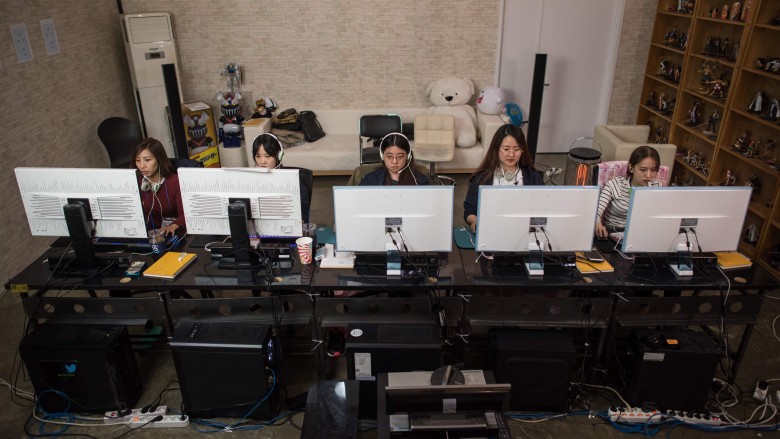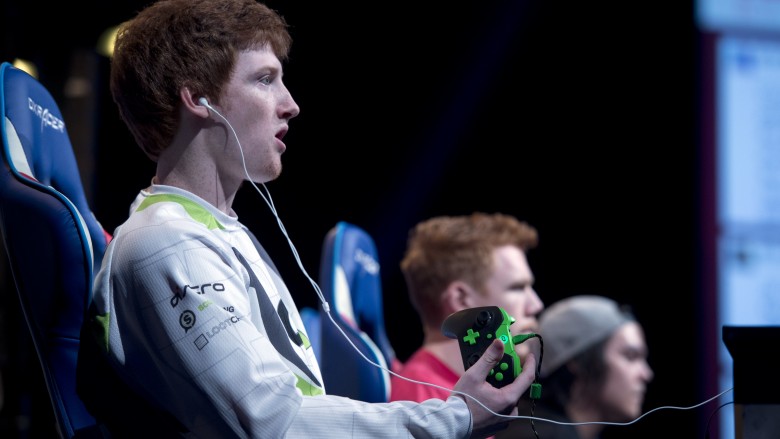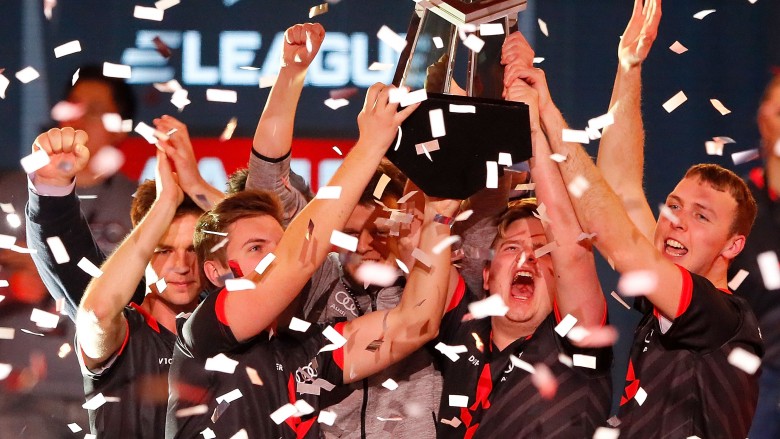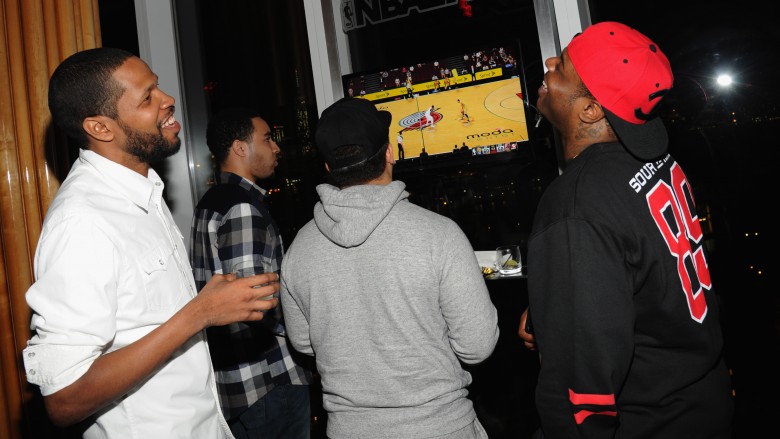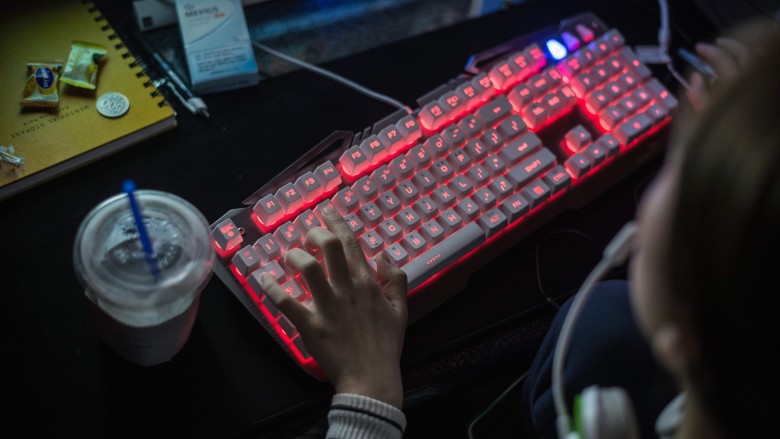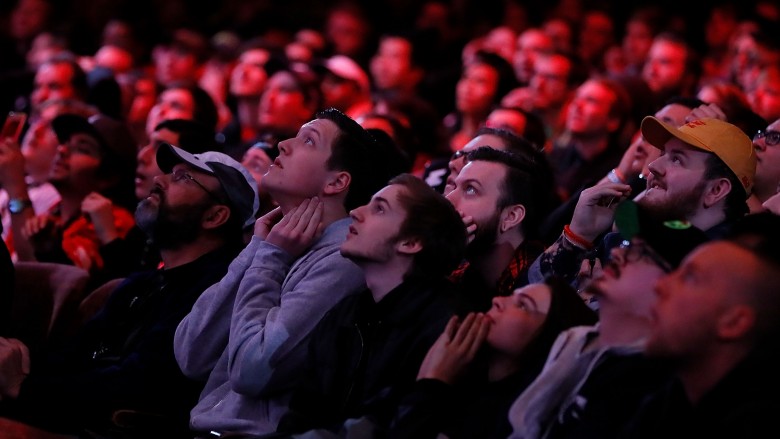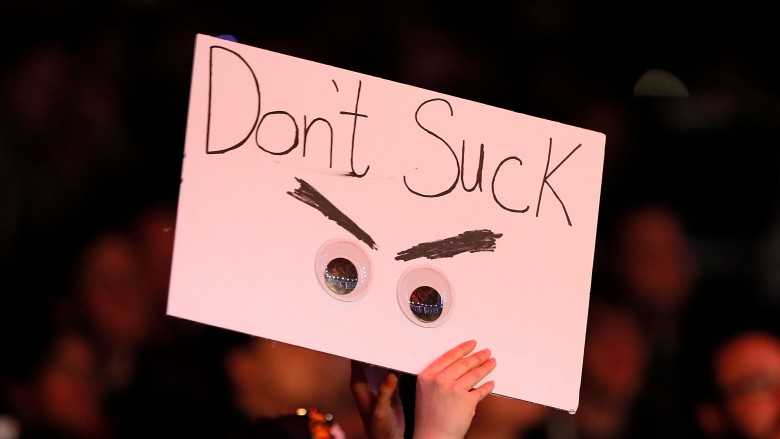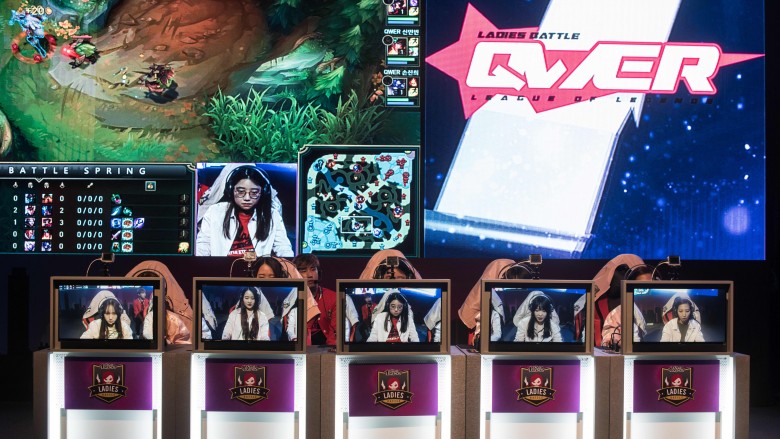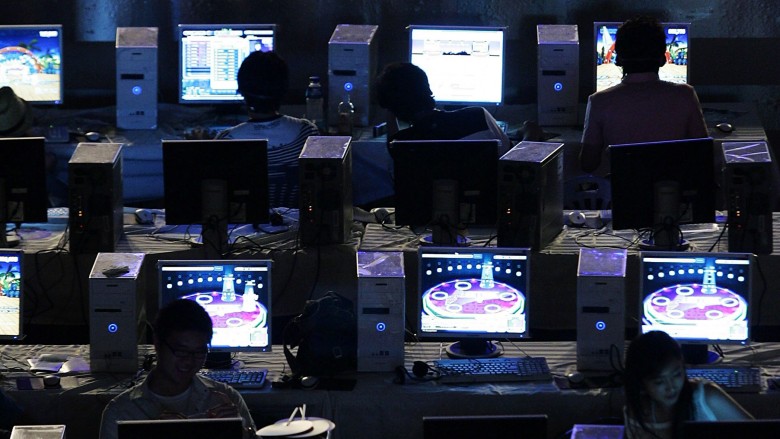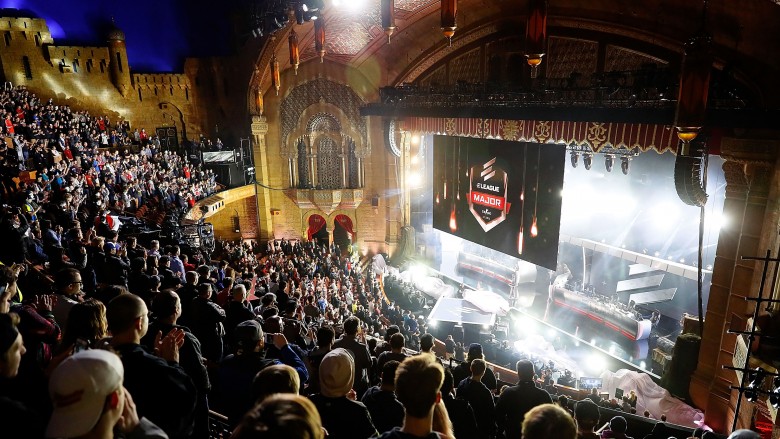The Untold Truth Of Esports
Electronic sports have really burst onto the scene in recent years, drawing interest from hard-core gamers and casual viewers alike. There's still a loss of mystery surrounding this relatively new form of competitive gaming, and a lot goes on behind the scenes that proves the sport still has plenty of room to develop. Likewise, some toxic problems need to be addressed for the sport to ever truly be considered just that, a "sport."
Pro gamers train like regular athletes
Playing for a living might sound like it's all fun and games, but it's not particularly fun. To even have a shot at competing for millions in prize money, professional gamers must train for hours on top of hours on top of hours, not unlike professional athletes in regular sports.
Practice makes perfect, and esports demands perfection. Ryan Towey explained to Complex what it's like to train for a major esports tournament, describing it as "a grind." Says Towey, "I cut out everything else. Twelve hours a day, it was all film, all gaming, all practice. It was seven days a week for over a month." That's certainly a lot of time sitting in front of a screen and can wear down even the most seasoned of players, but an intense training regimen is absolutely crucial to a professional gamer's livelihood. Unlike traditional athletes, who usually have fat salaries and guaranteed income, esports athletes are, more or less, entirely dependent on performance-based income—namely, winning tournaments. Failing to take the top spot can often result in the failure to keep the lights on, so grinding out orchestrated play after play in Counter-Strike: Global Offensive, for days at a time, is a vital part of the job.
Allen Iverson might not have cared much for practice, but when it comes to esports, we are, indeed, "talkin' 'bout practice."
Esports athletes peak in their late-teens
The average soccer player peaks in their mid-twenties and hangs up their cleats in their mid-thirties, standards that are comparable across most major sports. The average esports athlete, however, peaks in their mid-to-late teens and is generally forced to retire only a few years after gaining the legal permission to consume alcohol.
Take a look at your average League of Legends team, and it might look a little something like this: three young 19-year-olds making up the bulk of the squad, one 22-year-old vice-captain of sorts, and a grizzled old veteran weighing in at 24 years old, when most traditional athletes are just entering the peaks of their careers.
Unlike traditional athletes, whose careers largely depend on physical fitness, injuries, and the number of years their bodies can handle the demands of their particular sport, esports athletes must deal with insanely intense stress and mental strain. Whereas NBA players have fat contracts, agents, managers and personal assistants, living structured lives centered around maximizing wellbeing and, in turn, performance, esports athletes live in a cramped apartment with their teammates, grinding away in front of a screen in hopes of taking home some cash in their next tournament. That lifestyle becomes only more impossibly intense the older you get.
Furthermore, esports are all about fine-motor skills and reaction time. The sad reality is teens and young adults are simply quicker than adults in their late twenties, even if only by fractions of a second, which can mean all the difference in a round of Counter-Strike.
So what happens to these kid professional gamers after they've peaked in their twenties? Well, it's all about maintaining one's personal brand. Otherwise, well ... you're on your own.
Esports athletes make bank
Considering the insane training regimen, generally unhealthy lifestyle, and winner-take-most style of payment, one might wonder why anyone would want to be a professional gamer. The answer, however, is simple: if you are the best, you make some serious bank.
Many of the best esports players are millionaires, with lucrative sponsorship deals, agents, and effective brand management methods. Jiao "Banana" Wang, one of the wealthier esports athletes, made over $1.2 million playing some 38 matches of Dota, thanks to prize money and sponsorships. American Dota 2 player Saahil "UNIVeRsE" Arora has reportedly made a staggering near-$2 million from 39 tournaments. Other top players can easily make six figures annually, which is certainly no small chunk of change.
Yes, the money is there, but it definitely isn't easy to get. If you want to get paid, you've got to be the best, plain and simple. Win a tournament and you'll take home some fat stacks. Fail to make it through the rounds, however, and you might have some problems making ends meet.
The NBA has its own esports league
The popularity and financial success of esports hasn't gone unnoticed by traditional sports, and the National Basketball Association has jumped on the opportunity to capitalize on the new and rapidly growing electronic competition.
The world's best basketball league has announced that both basketball fans and gamers can look forward in 2018 to the NBA 2K eLeague, the first ever esports league to be operated by one of America's major professional sports leagues. The eLeague is scheduled to launch with at least eight teams, owned and operated by their real-life counterparts, with all 30 NBA teams slated to join in on the fun in the not-so-distant future. Prospective players will be put through the same rigmarole as prospective NBA athletes, requiring participation in a virtual combine and draft. Perhaps most exciting for potential players is the prospect of receiving more secure contracts and payments.
Whether watching a virtual Steph Curry drain threes over a virtual Lebron James is as exciting as the real thing remains to be seen.
Esports has a drug problem
Two simple back-to-back sentences shook the esports world back in 2015. The first: "We were all on Adderall." The second: "I don't even give a f**k."
Notoriously stated by Kory "SEMPHIS" Friesen, an esports star and high-level Counter-Strike: Global Offensive pro, in an interview on Mohan "Launders" Govindasamy's esports show, those sentences nonchalantly shone a spotlight on one of the burgeoning sport's biggest problems: performance enhancing drugs. The specific drug of choice for esports players? Popular ADHD medication and highly addictive study buddy Adderall, which sharpens up the senses, reduces fatigue and all around enhances performance in a competition where quick thinking, split-second choices, and mental lapses can mean the difference between hoisting the trophy or being the first loser. When asked by Govindasamy if "everyone does Adderall at ESEA LAN [esports Entertainment Association League events]," Friesen gave a casual "yeah." Since then, drug testing has become a standard in esports.
Adderall is a central nervous system stimulant and has well-documented performance-enhancing effects across a wide range of activities, from sports to test taking to competitive gaming. The prescription-only drug, however, has a half-life of around 10 hours, so it must be tested for almost immediately upon competing in a tournament. It shouldn't be too difficult to provide a pee sample after playing some League of Legends, though, given all the energy drinks those guys are pounding back the whole time.
It's easy to fix matches
Like baseball players back in the old days, most esports athletes don't make a lot of money, especially in their formative years. But one surefire way to make some guaranteed cash is to pull a Chicago Black Sox—that is, lose on purpose.
In August 2014, Counter-Strike team iBUYPOWER lost on purpose to Netcodeguides.com, and apparently did a poor job of hiding it, laughing the whole time and playing way way waaaay below the level one would expect of any professional team to play. Later on the same year, a whole slew of arrests were made surrounding a South Korean StarCraft 2 match-fixing scandal.
The greater issue isn't the players, themselves, cheating, as much as it's the exploitive system as a whole. The pressure to perform is high, and cheating or losing on purpose represents a way to keep the lights on in the overcrowded apartment.
Racism is rampant
Few things in life are as toxic as a Twitch.tv chat. Pop open any random Twitch.tv stream, and you're likely to see a whole slew of negativity, and the toxicity only multiplies exponentially as the numbers of viewers increase.
Case in point: Terrence Miller's magnificent run at major 2016 tournament Dreamhack Austin. During his post-match interviews, the Twitch chat positively exploded with anything-but-positive messages, primarily, racist remarks, racist jokes, and racial slurs. Miller wasn't surprised: "Obviously, the fact that it was happening bothers me, but hearing that people are saying racist things about me on the Internet is nothing new and it's not surprising that Twitch chat was doing that."
Miller isn't anywhere near the only esports player targeted by Twitch.tv toxicity. Asian players are commonly and intentionally mistaken for Jeffrey "Trump" Shih. Pretty much everyone's appearance is ridiculed. It's a culture that's not only disturbing but extremely problematic for the growth of esports into something more legitimate, especially in the eyes of the average, everyday mainstream consumer.
If you've never experienced racism on the Internet before, simply load-up any Twitch.tv stream, preferably with a high number of viewers, and see for yourself. It shouldn't take long.
Female gamers are challenging sexism
According to professional player Steph Harvey, women only occupy roughly 5 percent of esports, telling BBC News, "It's still a 'boys' club,' so as a woman, you're automatically judged for being different." While players of different ethnicities get harassed racially, women in esports get harassed sexually, thanks to the ever-toxic Twitch.tv chats blowing up with "extremely graphic" references to rape, on top of ever-present sexist jokes. Many women involved in competitive gaming refuse to let the toxicity get them down and are instead intent on fighting it. Harvey has asked herself, "Why do I do this if my community hate me?" Her answer is simple: "Because I am a feminist, because I believe women have a place in gaming."
The pay gap between males and females is also extreme, with the best male players making millions of dollars while the top female players make only a small fraction of that, topping out around $200,000. Again, the belief that esports is a "boys' club" is to blame, with less interest generated, leading to fewer sponsorships, smaller payouts, and minimal media coverage.
In reality, virtually as many women play video games as men, with the Pew Research Center finding that only slightly more men play video games than women, at best. This fact appears to be entirely lost on the rapidly growing esports scene and is something that will need to be, and probably will be, addressed, if the sport is to cement itself into the mainstream.
South Korea dominates
When it comes to esports, South Korea absolutely dominates the rest of the world, North America, especially. But America loves to win, so much so that Americans get tired of winning! So what gives?
South Korea comes on top for a variety of reasons. First, their Internet infrastructure blows most of the rest of the world's out of the water, with professional players often responding to South Korean dominance by crediting their ability to continually play and train with "low ping," or, in layman's terms, better Internet. Another theory poses that they're under significantly more pressure than their North American counterparts, with individual players simply representing replaceable cogs in the winning machine. ESPN credits the South Koreans' "tireless work ethic and culture of putting the team before self" to explain why no other country even comes close to challenging their reign.
Whatever the reason, South Korea simply outperforms the rest of the world's esports teams with razor-sharp precision, organization, and team-oriented play. They say mimicry is the greatest form of flattery, but even that has yet to pay off for the rest of the world's greatest gamers.
Ratings are through the roof
In June 2016, 31 million people tuned in to watch LeBron James enter beast mode in Game 7 of the NBA FInals. Who would've guessed that those viewership numbers would be dwarfed by the previous years' League of Legends world final between Koo Tigers and SK Telecom in Berlin, Germany, which got 36 million viewers?
We're entering a new era of cord-cutting, thanks to free streaming services like Twitch.tv, and traditional sports are feeling the hurt. According to Fox Business, a survey by market research company Newzoo concluded that 76 percent of esports fans find professional gaming significantly cuts into the time they'd otherwise be watching sports. For media outlets spending big on covering the NFL, NBA, MLB or NHL, this is no bueno, nor is it good for the sports leagues themselves. It's no surprise the NBA has jumped on the esports bandwagon, with plans to launch their own esports league in 2018.
Esports is still infantile, with plenty of room to grow. And grow it most certainly will.

